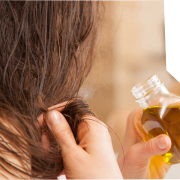Taking Care Of Your Skin By Eating Healthily – Top Suggestions
We heal from the inside out. It’s no secret that our exterior mirrors our interior. Eating dark, leafy greens is the safest way to heal with food. These foods clean out the system, promote healthy skin and can even reduce sun damage. Studies show that diet really does impact complexion. There’s also a correlation between dairy and acne. It’s something to think about as you make diet changes and cut back on the sugary foods that may actually be clogging your pores and raising insulin levels. Here are some skin-friendly foods to pick up at the grocery store for a radiant glow!
Sweet Potato
Sweet potatoes imply sweetness but really they provide a mecca of nutrients for skin. High in beta carotene and antioxidants, sweet potatoes can give skin a lasting glow without the influx of heavy carbohydrates. They’re better suited for winter weather as they help retain nutrients in your system. Steam and eat plain to avoid added fats that golden potatoes have.
Avocado
Oh, what we would do for an avocado right now! Vitamin C and vitamin E are the magic nutrients in avocados. Not only do avocados great face masks, they’re also great for healing skin from the inside out. Avocados contain between 2 and 6 micrograms of biotin (which we know from our own research is good for skin). Enjoy as a light snack in the form of guacamole or as a topping on a sandwich.
Walnuts
Almost every type of nut is good for skin. If eaten raw (meaning there are no added flavorings or high amounts of sodium), nuts add omega 3 fatty acids to your diet. They’re also a great source of UV protection. What’s even better? They’re versatile. You can eat them in just about everything. Walnuts in particular help strengthen immunity and bone health, which are all contributing factors to radiant skin.
Sunflower Seeds
We could classify sunflower seeds in a similar category to nuts. Sunflower seeds are obtained from the center of the sunflower, which so eloquently denotes its name! Sunflower seeds do it all: they’re fat-soluble, an active antioxidant, help promotes cell formation and lower cholesterol. The cell formation is worth noting: sunflower seeds are said to stimulate skin growth.
Beans
Kidney beans are especially high in zinc, which is great news for your skin. Vitamin C and A are found in most types of beans. They’re high in calcium and make the perfect snack. Even green beans fit into this category! Green beans contain the carotenoids lutein, meaning they’re a natural fix for anti-aging. Roast for a simple potato-like treat or boil with salt and pepper for a dinner side.
Tomatoes
Tomatoes. We have the great debate on whether they’re a fruit or a vegetable. Whichever they are, they hold benefits to naturally radiant skin. Tomatoes protect against UV rays and they boost elasticity and collagen production. With the right combination, tomatoes can help reduce signs of acne scars. A little tomato paste goes a long way!


